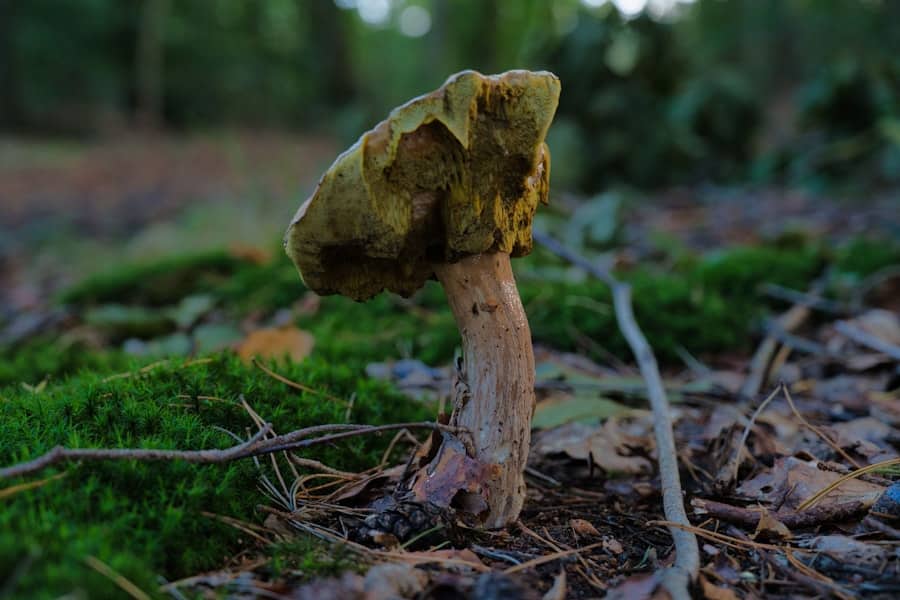Termite damage is a silent menace that can wreak havoc on your home without you even realizing it. These tiny insects, often referred to as “silent destroyers,” can cause significant structural damage before you notice their presence. Understanding the nature of termite infestations is crucial for homeowners, as early detection can save you from costly repairs and extensive damage.
You may not think much about these pests until you find yourself facing the consequences of their relentless appetite for wood and cellulose-based materials. As you delve into the world of termite damage, it’s essential to recognize that these pests are not just a nuisance; they pose a serious threat to the integrity of your home. With their ability to consume wood at an alarming rate, termites can compromise the very foundation of your living space.
By familiarizing yourself with the signs of infestation and understanding how to prevent these pests from taking hold, you can protect your home and ensure its longevity.
Key Takeaways
- Termite damage can be costly and extensive, making it important to be able to identify the signs of infestation early on.
- Visible signs of termite infestation include hollowed or damaged wood, mud tubes, swollen floors and ceilings, discarded wings, peeling or bubbling paint, tight-fitting doors and windows, termite droppings, and sagging or buckling floors.
- Hollowed or damaged wood is a common sign of termite infestation, as termites feed on wood from the inside out, leaving a thin veneer of wood or paint.
- Mud tubes are small tunnels made of soil and wood particles that termites use to travel between their nest and a food source, and are often found near the foundation of a building.
- Swollen floors and ceilings, discarded wings, peeling or bubbling paint, tight-fitting doors and windows, termite droppings, and sagging or buckling floors are all signs of termite infestation that should be addressed promptly to prevent further damage.
Visible Signs of Termite Infestation
When it comes to identifying a termite infestation, being vigilant about visible signs is key. You might first notice subtle changes in your home that could indicate the presence of these pests. One of the most common signs is the appearance of small holes in wooden structures or furniture.
These holes are often the entry points for termites, allowing them to access the wood inside your walls or floors. If you spot any unusual holes, it’s time to investigate further. Another visible sign to watch for is the presence of discarded wings.
Termites shed their wings after swarming, which typically occurs during warm months. If you find small, translucent wings scattered around windowsills or near light fixtures, it could be a strong indication that termites have made your home their own. Being aware of these signs can help you take action before the infestation escalates.
Hollowed or Damaged Wood

One of the most telling signs of termite damage is hollowed or damaged wood. As you inspect your home, pay close attention to wooden beams, floorboards, and furniture. If you tap on these surfaces and hear a hollow sound, it’s a clear indication that termites have been hard at work inside.
The damage may not always be visible from the outside, but the internal structure could be compromised. In addition to hollow sounds, you may also notice soft or crumbling wood when you probe with a screwdriver or similar tool. This type of damage occurs as termites consume the cellulose within the wood, leaving behind a fragile shell.
If you encounter any areas that feel spongy or weak, it’s crucial to address the issue immediately. Ignoring these signs can lead to more extensive damage and costly repairs down the line.
Mud Tubes
Mud tubes are another significant indicator of termite activity that you should be aware of. These tubes are constructed by subterranean termites as they travel between their nests and food sources. You might find them along foundation walls, in crawl spaces, or even inside your home.
The tubes are typically about the width of a pencil and are made from soil, wood particles, and termite saliva, creating a protective tunnel for these pests. If you come across mud tubes during your inspection, it’s essential to take them seriously. Their presence suggests that termites are actively foraging for food within your home.
You should carefully remove a section of the tube to confirm whether termites are present. If you find live termites inside, it’s time to call in a pest control professional to assess the situation and implement an effective treatment plan.
Swollen Floors and Ceilings
Swollen floors and ceilings can be another alarming sign of termite damage that you should not overlook. As termites consume wood and other cellulose materials, they can cause structural changes that lead to warping or swelling in your flooring and ceilings. If you notice any areas that appear raised or uneven, it may be time to investigate further.
In addition to visual cues, you may also experience changes in how your floors feel underfoot. If certain areas feel spongy or unstable, it could indicate that termites have compromised the underlying support structures. Addressing these issues promptly is crucial to maintaining the safety and integrity of your home.
Discarded Wings

As previously mentioned, discarded wings are a common sign of termite activity that can easily go unnoticed. After swarming, reproductive termites shed their wings as they search for new nesting sites. You might find these wings in clusters near windows or light sources where they were attracted to the light during their mating flight.
If you discover discarded wings in your home, it’s essential to take this sign seriously. It indicates that a colony may have established itself nearby or even within your walls. To prevent further infestation, consider conducting a thorough inspection of your property and consulting with pest control experts who can help identify potential entry points and recommend appropriate treatments.
Peeling or Bubbling Paint
Peeling or bubbling paint is often associated with moisture issues, but it can also be a sign of termite damage. When termites tunnel through wood, they can create moisture pockets that lead to paint deterioration on surfaces like walls and ceilings. If you notice paint that appears blistered or is peeling away from wooden structures, it may be time to investigate further.
In some cases, this damage may be accompanied by other signs of infestation, such as hollowed wood or mud tubes. If you suspect that termites are responsible for the paint issues in your home, it’s crucial to address the problem promptly. Ignoring these signs could lead to more extensive damage and costly repairs down the line.
Tight-Fitting Doors and Windows
Tight-fitting doors and windows can be an unexpected sign of termite activity in your home. As termites consume wood and create tunnels within structural components, they can cause warping or shifting in door frames and window casings. If you find that doors or windows are suddenly difficult to open or close, it may be worth investigating whether termites are at play.
In addition to tight-fitting doors and windows, you may also notice gaps or misalignments in frames that were previously secure. These changes can compromise the overall functionality of your home’s entry points and may indicate underlying structural issues caused by termite damage. If you suspect an infestation, consider consulting with pest control professionals who can assess the situation and recommend appropriate solutions.
Termite Droppings
Termite droppings, also known as frass, are another telltale sign of an infestation that you should be aware of. These droppings resemble small pellets and are often found near areas where termites are active. If you notice small piles of what looks like sawdust near wooden structures or furniture, it could be an indication that termites are feeding nearby.
Identifying termite droppings is crucial for early detection and intervention. If you find frass in your home, it’s essential to take immediate action by contacting pest control experts who can help determine the extent of the infestation and implement effective treatment strategies.
Sagging or Buckling Floors
Sagging or buckling floors can be one of the most alarming signs of termite damage in your home. As termites consume wood from beneath your flooring, they weaken the structural integrity of support beams and joists. If you notice any areas where your floors appear uneven or sagging underfoot, it’s essential to investigate further.
In addition to visual cues, you may also experience creaking or popping sounds when walking on affected areas. These signs indicate that the underlying support structures may be compromised due to termite activity. Addressing these issues promptly is crucial for maintaining the safety and stability of your home.
Conclusion and Prevention Tips
In conclusion, being aware of the signs of termite damage is essential for every homeowner. By recognizing visible indicators such as hollowed wood, mud tubes, discarded wings, peeling paint, tight-fitting doors and windows, droppings, and sagging floors, you can take proactive steps to protect your home from these destructive pests. Early detection is key; if you suspect an infestation at any point, don’t hesitate to reach out to pest control professionals who can provide expert guidance.
To prevent termite infestations in the first place, consider implementing several proactive measures around your property. Regularly inspect wooden structures for signs of damage and maintain proper drainage around your foundation to reduce moisture levels that attract termites. Additionally, sealing cracks and crevices in your home’s exterior can help prevent these pests from gaining entry.
By staying vigilant and taking preventive measures, you can safeguard your home against termite damage and ensure its longevity for years to come. Remember that knowledge is power; understanding how to identify potential threats will empower you to take action before they escalate into significant problems.
If you are concerned about termite damage to your home, you may also want to read about the invasion of ants and other common household pests in this article. Understanding the signs of various pests can help you take proactive measures to protect your home. Additionally, if you are in need of pest control services in Warren, Michigan or Oklahoma City, Oklahoma, be sure to check out the best pest control service providers in these areas at Warren, Michigan and Oklahoma City, Oklahoma.
FAQs
What are termites?
Termites are small, pale insects that feed on wood and can cause significant damage to wooden structures.
What are the most common signs of termite damage to structures?
The most common signs of termite damage to structures include hollow-sounding wood, sagging floors or ceilings, visible mazes within walls or furniture, and discarded wings near doors or on windowsills.
How can I identify termite damage?
You can identify termite damage by looking for mud tubes on exterior walls, damaged or hollow-sounding wood, and small holes in wood with sawdust or droppings nearby.
What should I do if I suspect termite damage?
If you suspect termite damage, it is important to contact a professional pest control company to conduct an inspection and determine the best course of action for treatment and prevention.
